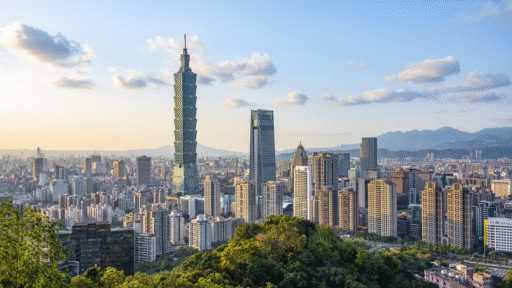A turning point for international talent
Historically, the US has benefited from the international “brain drain”, attracting top healthcare talent globally due to superior research funding, infrastructure, and career opportunities. However, a series of recent developments have prompted many international healthcare students and researchers to re-evaluate whether the US remains the best option for academic training, research and development (R&D), and long-term careers.
The US Department of Homeland Security’s suspension of Harvard University’s international Student and Exchange Visitor Programme (SEVP) certification has cast uncertainty over the status of 6,800 currently enrolled international students and has raised concerns for the enrolment of newly admitted students in the upcoming school year.[1]
Separately, significant cuts to healthcare research funding by the Trump administration are undermining the scientific ecosystem. The National Institutes of Health (NIH) saw a USD 1.81 billion reduction in grants, resulting in a sharp increase in research proposal rejections and over a thousand layoffs.[2], [3], [4] Similarly, the Food and Drug Administration (FDA) and Centres for Disease Control and Prevention (CDC) are expected to lose 3,500 and 2,400 employees, respectively, severely disrupting ongoing health-related research programmes.[5] These layoffs are not limited to junior researchers; senior staff and research directors are also affected, further diminishing institutional capacity.
In parallel, many US universities have halted funding for new Ph.D. students, paused early-career fellowships, and frozen new faculty hiring.[6] With no signs of stabilisation in funding or policy direction, the scientific and academic community is left in a state of uncertainty. While the US has long been the global hub for medical innovation, the compounding effects of immigration constraints, funding cuts, and institutional disruptions are eroding its appeal.
This shifting landscape is pushing top talent to explore alternative destinations. According to a recent poll by Nature, 75% of US scientists are considering leaving the country.[7] This creates a strategic window for Asian economies to proactively position themselves as viable and attractive options for high-potential healthcare researchers. If governments act strategically, this shift could catalyse a step-change in national healthcare innovation and system modernisation. But without proactive measures, returning talent may become underutilised or lost to other destinations.
Creating the conditions for talent to thrive
Here’s how governments can prepare now to unlock the potential of these globally trained professionals:
1. Establish a national healthcare talent strategy
Governments should develop a coordinated national talent strategy to attract returning healthcare professionals, including researchers, clinicians, and students. This should include providing fast-track research grants and start-up funding targeted at returnees, as well as streamlined licensing and credential recognition for international degrees and experience.
Without a clear national vision, returnees risk falling through the cracks of fragmented institutional systems. A strong strategy can help signal commitment and align resources. For instance, China’s “Thousand Talents Plan (TTP)” and “Young Thousand Talents (YTT)” programme launched in 2008 successfully reintegrated scientists trained abroad by offering clear pathways into national R&D priorities.[8] Economies must demonstrate to returnees that their expertise aligns with long-term missions that matter and are institutionally supported.
2. Build a thriving domestic healthcare industry
Beyond academia, governments must stimulate a robust healthcare sector that can bridge the lab-to-market gap and utilise returning talent. A key action will be incentivising the creation of private R&D centres and MedTech and BioTech start-ups to translate scientific discoveries into commercially viable healthcare solutions. Another component is for governments to attract international firms through tax incentives, regulatory support, and access to talent, positioning themselves as global hubs for healthcare innovation and investment.
The private sector plays a critical role, not only by commercialising research but also by offering career opportunities. Taiwan and Singapore’s booming MedTech sector and Thailand’s growing medical tourism ecosystem show how private investment can fuel innovation and create high-value jobs.[9] [10] [11] In India, the Biotechnology Industry Research Assistance Council (BIRAC) has supported over 3,000 start-ups and entrepreneurs, and generated over 32,000 labour market opportunities.[12] Creating an environment where new ideas can become marketable solutions is essential to absorbing talent and ensuring long-term impact.
3. Upgrade public research and innovation infrastructure
Top-tier professionals expect top-tier working environments. To compete globally, governments should modernise public health and biomedical research infrastructure by investing in AI-powered digital health systems and data-driven research platforms, in addition to establishing healthcare innovation hubs that foster cross-sector collaboration and public-private R&D.
State-of-the-art infrastructure is a key magnet for top researchers. Japan’s RIKEN Institute, Singapore’s Agency for Science, Technology and Research (A*STAR), and China’s Chinese Academy of Sciences are regional examples of how strategic investments in facilities can drive global recognition and output. For returnees accustomed to world-class environments, robust infrastructure – both physical and digital – signals that their work will not only continue but thrive. Governments must ensure the conditions for research excellence are not only met but continuously upgraded.
4. Strengthen regional and cross-border collaboration
Many economies in Asia face similar healthcare challenges and can benefit from talent pooling and collaboration to accelerate national progress. Governments should create multilateral fellowship and grant programmes through platforms like ASEAN and facilitate researcher mobility and joint appointments between institutions across the region to expand networks and build regional capacity.
For nations with limited R&D infrastructure, cross-border collaboration enables access to advanced facilities, research networks, and complementary capabilities. The ASEAN Digital Health Dialogue has built momentum around regional digital health cooperation,[13] while joint funding schemes like the ADB’s Asia Health Security Initiative provide a blueprint for cross-border R&D. A returnee based in Thailand might co-lead a public health study with Vietnam or work with Malaysian hospitals on genomics – efforts that ultimately generate collective gains: less-developed economies gain access to advanced technologies, while stronger ecosystems can commercialise and scale innovations.
5. Support professional integration and retention
Returning talent brings more than skills; they bring expectations. To truly retain them, governments must provide autonomy in research direction, with funding mechanisms that are streamlined and support long-term, high-impact projects rather than short-term outputs. In addition, it helps if governments can offer relocation assistance, family support, and dual-career options for spouses and partners.
Talented individuals are not just looking for a job – they are looking for a home. China’s Qiming Plan and India’s INSPIRE programme offer flexibility and autonomy that appeal to top researchers. Dual-career assistance, school access for children, and even housing subsidies can significantly improve the retention of mid-career professionals with families. Governments should treat returnees not as temporary hires, but as long-term national assets.
Asia’s shifting focus
The shifting academic and funding landscape in the US is opening a strategic time window for Asian economies to reclaim its global health leaders. Despite rapid economic growth, many Asian economies have lagged in developing globally recognised healthcare institutions and leadership pipelines.
In 2022, pharmaceutical R&D spending in US reached USD 75 billion, while China and Japan spent only USD 16 billion and USD 11 billion, respectively.[14] According to a recent report, Asia accounts for over 60% of the world’s population but only 22% of global healthcare expenditure.[15] Government investment in healthcare also varies widely across the region. Singapore allocates approximately 5.5% of its GDP to healthcare infrastructure, compared to just 3.7% in Indonesia. Fragmented systems, limited R&D capacity, and underinvestment in public health infrastructure have slowed progress. Reclaiming global health talent now would not only help bridge these gaps but also accelerate Asia’s emergence as a centre for healthcare innovation, policy, and leadership.
Seizing the opportunity
At Access Partnership, we bring deep expertise in healthcare strategy, workforce development, and policy evaluation. If your organisation is exploring labour market trends, healthcare sector investment, or the policy landscape shaping these areas, we welcome the opportunity to connect. Please reach out to Dr. Cathy Wu at [email protected] or Cheng Wei Swee at [email protected].
Footnotes:
[1] CAN (2025), “Trump administration blocks Harvard University from enrolling international students”. Available at: https://www.channelnewsasia.com/world/trump-us-government-bars-harvard-university-enrol-international-students-5147931
[2] Aria Bendix (2025), “Trump administration cut more than $1.8 billion in NIH grants”, NBC NEWS. Available at: https://www.nbcnews.com/health/health-news/trump-administration-cut-18-billion-nih-grants-rcna205568
[3] Smriti Mallapaty (2025), “Exclusive: NIH grant rejections have more than doubled amid Trump chaos”, nature News. Available at: https://www.nature.com/articles/d41586-025-01539-5
[4] Stein et al. (2025), “Widespread firings start at federal health agencies including many in leadership”, Shots Health News From NPR. Available at: https://www.npr.org/sections/shots-health-news/2025/04/01/g-s1-57485/hhs-fda-layoffs-doge-cdc-nih
[5] The Associated Press (2025), “Here’s where jobs and programs are being cut at the nation’s top health agencies”, Associated Press News. Available at: https://apnews.com/article/trump-hhs-cdc-fda-nih-cms-layoffs-5aba829b829d9e1a0167c4a0d968aadb
[6] Katherine Knott (2025), “More Colleges Freeze Hiring Amid Federal Funding Uncertainty”, Inside Higher Ed. Available at: https://www.insidehighered.com/news/business/cost-cutting/2025/03/14/more-colleges-freeze-hiring-amid-federal-funding-uncertainty
[7] Alexandra Witze (2025), “75% of US scientists who answered Nature poll consider leaving”, Nature News. Available at: https://www.nature.com/articles/d41586-025-00938-y
[8] Stanford Center on China’s Economy and Institutions (2023), “Evaluating the Success of China’s “Young Thousand Talents” STEM Recruitment Program”. Available at: https://sccei.fsi.stanford.edu/china-briefs/evaluating-success-chinas-young-thousand-talents-stem-recruitment-program
[9] BBC (n.d.) “Cutting-edge medtech from Taiwan”. Available at: https://www.bbc.com/storyworks/future/taiwan-the-future-of-smart-tech/cutting-edge-medtech-from-taiwan
[10] EDB (2024), “Singapore’s MedTech sector and locally made medical devices punching above their weight”, Singapore Economic Development Board (EDB). Available at: https://www.edb.gov.sg/en/business-insights/insights/singapores-medtech-sector-and-locally-made-medical-devices-punching-above-their-weight.html
[11] Chong Xin Wei (2024), “Thailand leads Singapore in attracting medical tourists: DBS”, The Business Times. Available at: https://www.businesstimes.com.sg/international/asean/thailand-leads-singapore-attracting-medical-tourists-dbs
[12] Biotechnology Industry Research Assistance Council. Available at: https://www.birac.nic.in/
[13] ASCC Research and Development Platform Policy Brief #6 (2023), “ASEAN Socio-Cultural Community POLICY BRIEF”. Available at: https://asean.org/wp-content/uploads/2023/02/ASCC_Policy-Brief_Issue_6_Jan2023.pdf
[14] European Federation of Pharmaceutical Industries and Associations (EFPIA) data (n.d.). Available at: https://efpia.eu/publications/data-center/the-pharma-industry-in-figures-rd/pharmaceutical-rd-expenditure-in-europe-usa-china-and-japan/
[15] Priyanka Aggarwal, Smruthi Suryaprakash, and Ayushi Shukla (2025). “The Unmissable Asia Healthcare Opportunity”, BCG. Available at: https://www.bcg.com/publications/2025/india-the-unmissable-asia-healthcare-opportunity


Authors









